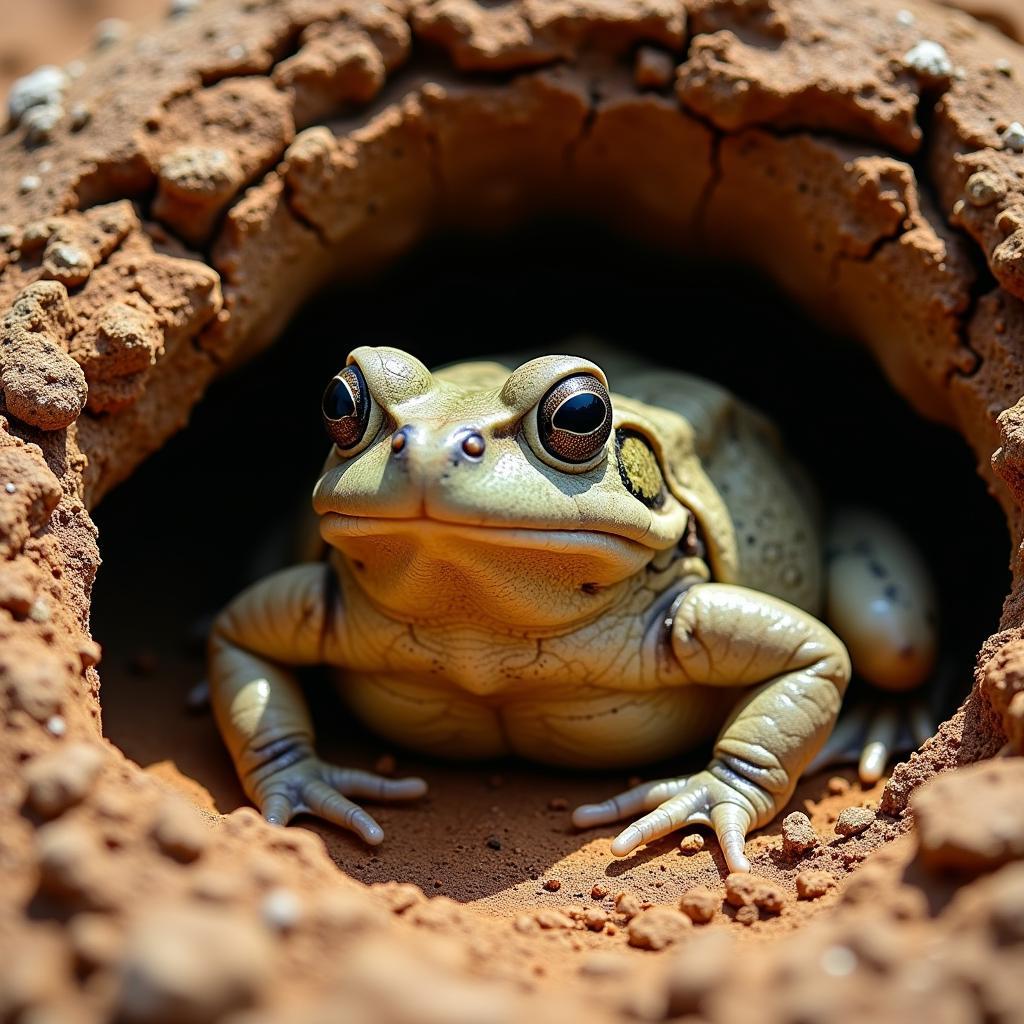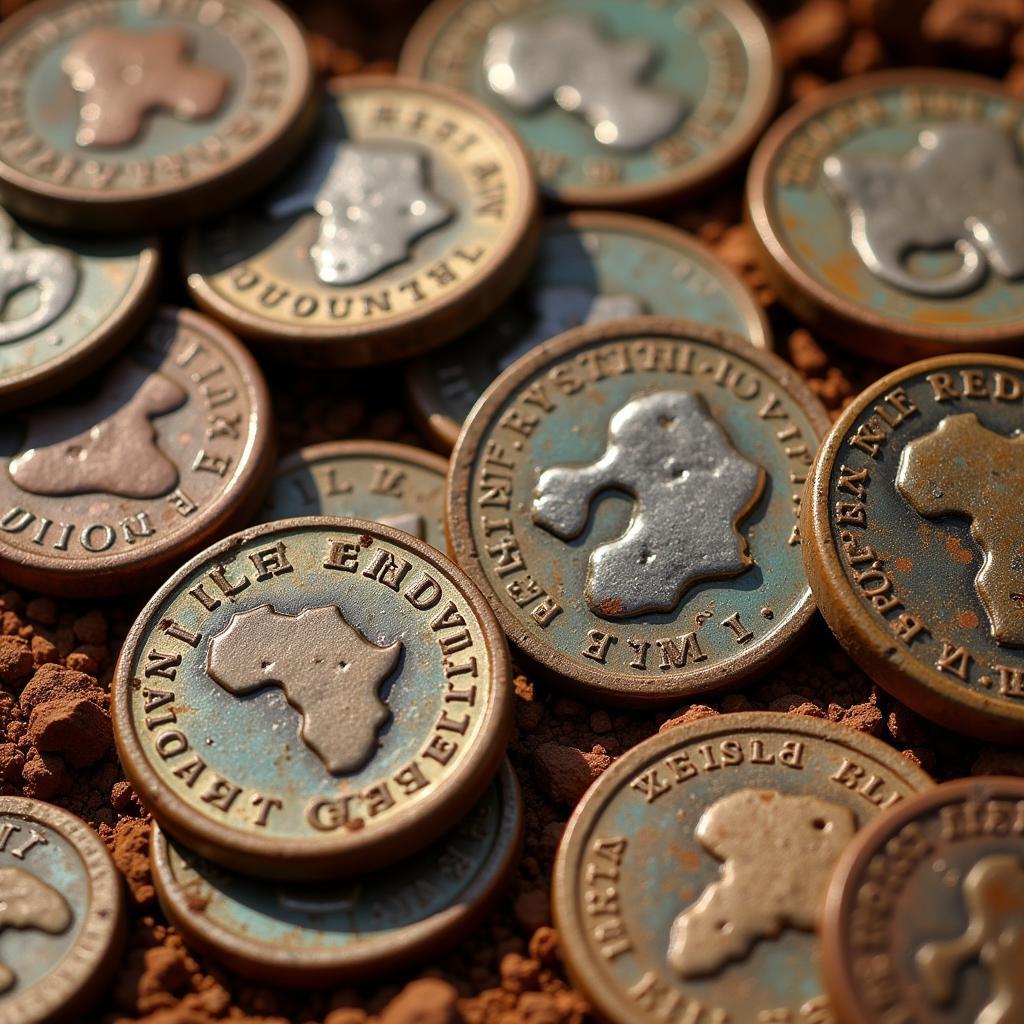African Bullfrog Hibernation: A Survival Strategy in Harsh Conditions
The African bullfrog, known for its aggressive nature and booming croak, utilizes a fascinating survival tactic: African Bullfrog Hibernation. This article delves into the intricacies of this process, exploring how and why these remarkable amphibians enter a state of dormancy to endure challenging environmental conditions.  African Bullfrog Underground during Hibernation
African Bullfrog Underground during Hibernation
Understanding African Bullfrog Hibernation
African bullfrog hibernation is a remarkable adaptation that allows these creatures to survive in arid and semi-arid regions of sub-Saharan Africa. During extended dry periods, when water sources dwindle and food becomes scarce, these frogs enter a state of prolonged inactivity, significantly reducing their metabolic rate.
Why Do African Bullfrogs Hibernate?
Hibernation is triggered by environmental cues, primarily the onset of the dry season. The decreasing availability of water and food signals the need for the frog to conserve energy and resources. This dormancy allows them to withstand extreme temperatures and drought conditions that would otherwise prove fatal.
- Water Conservation: A key reason for african bullfrog hibernation is to minimize water loss. During hibernation, they secrete a cocoon of shed skin that helps to retain moisture.
- Energy Conservation: By lowering their metabolic rate, they require less food and water, effectively extending their survival chances.
- Survival in Harsh Conditions: Hibernation enables African bullfrogs to endure scorching temperatures and extended droughts.
The Hibernation Process: A Deep Dive
The African bullfrog’s hibernation process involves several key stages:
- Burrowing: As the dry season approaches, the frog digs deep into the substrate, creating a burrow that offers protection from the harsh elements.
- Cocoon Formation: Once settled in its burrow, the frog sheds its skin multiple times, forming a protective cocoon around its body. This cocoon helps to prevent water loss. african bullfrog adaptation
- Metabolic Slowdown: The frog’s metabolic rate decreases dramatically, conserving energy and reducing the need for food and water.
- Dormancy: The frog enters a state of dormancy, remaining inactive until the rains return.
- Emergence: When the rains arrive, signaling the end of the dry season, the frog emerges from its burrow, ready to resume its normal activities.
“The African bullfrog’s hibernation strategy is a testament to the power of adaptation in the animal kingdom,” says Dr. Khadija Makame, a herpetologist specializing in African amphibians. “This remarkable ability allows them to thrive in some of the harshest environments on Earth.”
Fascinating Facts About African Bullfrog Hibernation
- Duration: African bullfrogs can remain in hibernation for several months, sometimes even up to a year, depending on the length of the dry season. african bullfrog habitat
- Depth of Burrow: They can burrow to depths of over a meter to escape the extreme heat and dryness.
- Cocoon Composition: The cocoon is made up of layers of shed skin and mucus, creating a waterproof barrier.
Professor Abasi Zuberi, an expert in African wildlife, adds, “The African bullfrog’s hibernation is a fascinating example of how animals have evolved to cope with challenging environmental conditions. Their ability to slow down their metabolism and conserve water is truly remarkable.” african bullfrog eating chick
Conclusion
African bullfrog hibernation is a crucial survival strategy, allowing these amphibians to endure prolonged periods of drought and extreme temperatures. This remarkable adaptation underscores the resilience and adaptability of life in the face of adversity. Understanding african bullfrog hibernation not only provides insights into the natural world but also highlights the importance of conservation efforts to protect these fascinating creatures and their fragile ecosystems. african bullfrog images
When you need assistance, please contact us at Phone Number: +255768904061, Email: kaka.mag@gmail.com Or visit us at: Mbarali DC Mawindi, Kangaga, Tanzania. We have a 24/7 customer service team.



